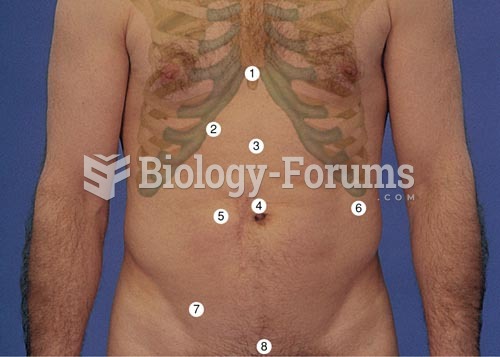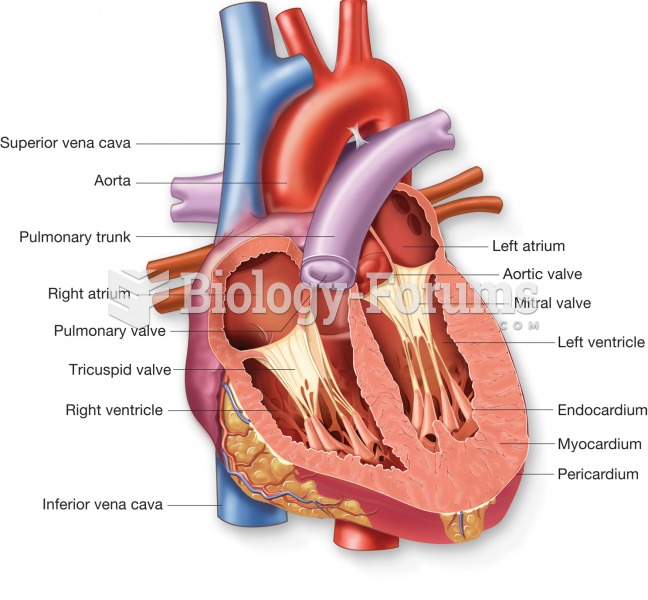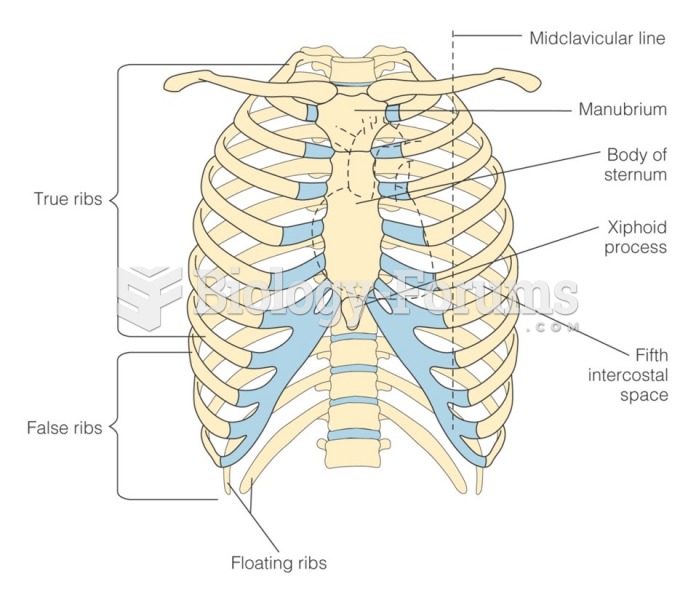|
|
|
Did you know?
There are over 65,000 known species of protozoa. About 10,000 species are parasitic.
Did you know?
Computer programs are available that crosscheck a new drug's possible trade name with all other trade names currently available. These programs detect dangerous similarities between names and alert the manufacturer of the drug.
Did you know?
The FDA recognizes 118 routes of administration.
Did you know?
Signs and symptoms of a drug overdose include losing consciousness, fever or sweating, breathing problems, abnormal pulse, and changes in skin color.
Did you know?
Women are 50% to 75% more likely than men to experience an adverse drug reaction.
 Abdominal Assessment Landmarks. When describing pathology of the abdomen, it is useful to use theses
Abdominal Assessment Landmarks. When describing pathology of the abdomen, it is useful to use theses
 Internal view of the heart illustrating the heart chambers, heart layers, and major blood vessels as
Internal view of the heart illustrating the heart chambers, heart layers, and major blood vessels as
 An alternating pneumatic compression device squeezes the leg tissues causing blood to move toward th
An alternating pneumatic compression device squeezes the leg tissues causing blood to move toward th




